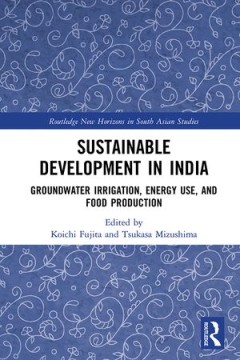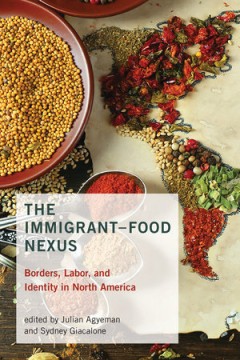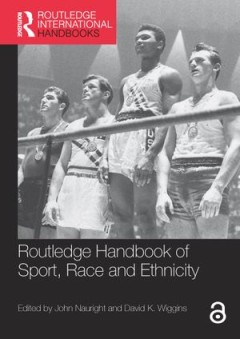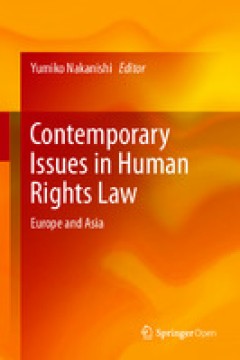Filter by

Sustainable Development in India: Groundwater Irrigation, Energy Use, and Foo…
This book explores and interrogates the food–water–energy nexus, arguably the most crucial factor in sustaining India’s economic development. The book sheds light on different experiences faced in states across India, including the consequences of electricity tariff reforms and related policies on irrigated agriculture. Part 1 focuses on the historical development of agriculture and socia…
- Edition
- -
- ISBN/ISSN
- 9781003036074
- Collation
- -
- Series Title
- -
- Call Number
- 305.8 SUS s

Ethnomusicology, Queerness, Masculinity
This open access book explores the disciplinary, disciplined, and recent interdisciplinary sites and productions of ethnomusicology and queerness, arguing that both academic realms are founded upon a destructive masculinity—indissolubly linked to coloniality and epistemic hegemony—and marked by a monologic, ethnocentric silencing of embodied, same-sex desire. Ethnomusicology’s fetishizati…
- Edition
- -
- ISBN/ISSN
- 978-3-031-15313-6
- Collation
- X, 240
- Series Title
- -
- Call Number
- -

'The Bell Curve' in Perspective
This open access book examines the implications of The Bell Curve for the social, economic, and political developments of the early 21st century. Following a review of the reception of The Bell Curve and its place in the campaign to end affirmative action, Professor Tucker analyses Herrnstein’s concept of the “meritocracy” in relation to earlier 20th century eugenics and the dramatic incr…
- Edition
- -
- ISBN/ISSN
- 978-3-031-41614-9
- Collation
- XIII, 124
- Series Title
- -
- Call Number
- -

Rethinking violence: States and non-state actors in conflict
"Foreword by Stathis N. Kalyvas."--Cover.Although major wars between sovereign states have become rare contemporary world politics has been rife with internal conflict, ethnic cleansing, and violence against civilians. This book asks how, why, and when states and non-state actors use violence against one another."States, nationalist movements, and ethnic groups in conflict with one another ofte…
- Edition
- -
- ISBN/ISSN
- 9780262266086
- Collation
- 1 online resource (xiii, 285 pages) :illustrations, maps.
- Series Title
- -
- Call Number
- -

The immigrant-food nexus :borders, labor, and identity in North America
The intersection of food and immigration in North America, from the macroscale of national policy to the microscale of immigrants' lived, daily foodways. This volume considers the intersection of food and immigration at both the macroscale of national policy and the microscale of immigrant foodways--the intimate, daily performances of identity, culture, and community through food.OCLC-licensed …
- Edition
- -
- ISBN/ISSN
- 9780262357555
- Collation
- 1 online resource (344 pages).
- Series Title
- -
- Call Number
- -

Routledge Handbook of Sport, Race and Ethnicity
Few issues have engaged sports scholars more than those of race and ethnicity. Today, globalization and migration mean all major sports leagues include players from around the globe, bringing into play a complex mix of racial, ethnic, cultural, political and geographical factors. These complexities have been examined from many angles by historians, sociologists, anthropologists and scientists. …
- Edition
- -
- ISBN/ISSN
- 9781317596677
- Collation
- -
- Series Title
- -
- Call Number
- 305.8 ROU r

Yosano Akiko and The Tale of Genji
Yosano Akiko (1878–1942) has long been recognized as one of the most important literary figures of prewar Japan. Her renown derives principally from the passion of her early poetry and from her contributions to 20th-century debates about women. This emphasis obscures a major part of her career, which was devoted to work on the Japanese classics and, in particular, the great Heian period text …
- Edition
- -
- ISBN/ISSN
- 9780472902002
- Collation
- -
- Series Title
- -
- Call Number
- 895.6 ROW y

Genomic citizenship :the molecularization of identity in the contemporary Mid…
"In the contemporary Middle East, genetics research on ethnic populations is changing the way groups understand and imagine their ethnic identities and places of belonging"--OCLC-licensed vendor bibliographic record.
- Edition
- -
- ISBN/ISSN
- 0262366703
- Collation
- 1 online resource.
- Series Title
- -
- Call Number
- -

Kinds come first :age, gender, class, and ethnicity give meaning to measures
An argument that the meaning of a psychological or biological measure depends on the age, gender class, and ethnicity of the human subject.OCLC-licensed vendor bibliographic record.
- Edition
- -
- ISBN/ISSN
- 9780262355049
- Collation
- 1 online resource (216 pages)
- Series Title
- -
- Call Number
- -

Contemporary Issues in Human Rights Law: Europe and Asia
EU fundamental rights; constitutional law; international
- Edition
- Ed. 1
- ISBN/ISSN
- 9789811061295
- Collation
- 219
- Series Title
- -
- Call Number
- 305 NAK c
 Computer Science, Information & General Works
Computer Science, Information & General Works  Philosophy & Psychology
Philosophy & Psychology  Religion
Religion  Social Sciences
Social Sciences  Language
Language  Pure Science
Pure Science  Applied Sciences
Applied Sciences  Art & Recreation
Art & Recreation  Literature
Literature  History & Geography
History & Geography